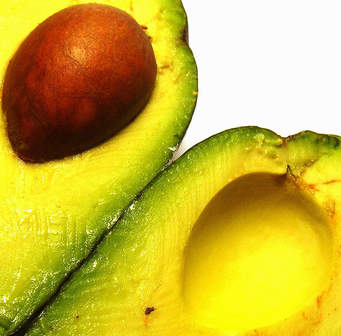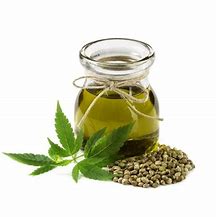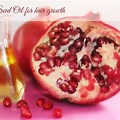Wheatgerm Oil - Triticum vulgare, T. durum, T. aestivum







Wheatgerm Oil - Triticum vulgare, T. durum, T. aestivum
Latin Name: Triticum vulgare,T.durum,T.aestivum
Family: Graminae
Etymology: Wheat is derived from whete, the Middle English (1151-1500) word which means white.
The Plant and its Environment
A cereal grass native to West Asia but widely cultivated in subtropical and temperate regions. The stems, up to 1 metre ( 3 feet) high. Each bear a cylindrical head of up to a hundred flower clusters grouped in vertical rows.
T. durum is used for making semolina and pasta, while T. aestivum is used for bread. The wheat germ consists of the husk (bran) 12%, the germ 3% (containing vitamins, minerals and protein, with the endosperm, consisting mainly of starch, making up the rest.
The Oil
The oil contains high levels of vitamin E, a natural antioxidant, so it can be added to other carrier oils to act as a preservative. Although it is fairly expensive, the wheat germ oil is the richest food source we have for vitamin E; soybean oil also has a high tocopherol content. The unrefined wheatgerm oil has a strong odour which some people find unattractive.
https://www.youtube.com/watch?v=ylNqepIgOmo
Method Of Extraction
Milling the grains of wheat germ for white flour separates out the wheat germ, which contains 25% protein, and a wide selection of vitamins and minerals. The oil is extracted from the germ but it should be noted that it is not possible to achieve pure cold pressed oil. Wheatgerm, like grapeseed, contains only around 13% of oil, so cold expression would produce marginal amounts.
Because of this, the oil is extracted in a process that is similar to maceration (Steir 1990) but solvent extraction and hot pressing are also used. The wheatgerm is stirred with a good quality cold pressed oil, during which process the germ soaks up the base oil.
This product is then cold pressed, yielding a form of macerated oil, which contains one third of wheatgerm oil and two thirds base oil (eg olive, sweet almond, sunflower etc). The constituents may vary because of the precise method of extraction.
Principal Constituents
| Type | Based On | Content -% |
| Saturate fatty acid Units | ||
| C14:0 | myristic acid | <0.1 |
| C16:0 | palmitic acid | 19 (11-12) |
| C18:0 | stearic acid | 1 |
| C20:0 | arachidic acid | <1 |
| C24:0 | lignoceric acid | <1 |
| Typical saturated fatty acid unit content | 21 | |
| Monounsaturated fatty acid units | ||
| C16:1 | palmitoleic acid | 0.2 |
| C18:1 | oleic acid | 18 (15-20) |
| Typical monounsaturated fatty acid content | 18 | |
| Polyunsaturated fatty acid units | ||
| C18:2 | linoleic acid | 54 (49-60) |
| C18:3 | linolenic acid | 6 |
| Typical polyunsaturated fatty acid unit content | 60 |
Reference: Carrier Oils For Aromatherapy & Massage: Len Price with Ian Smith & Shirley Price
Articles-Most Read
- Home
- Contact Us
- Coconut Oil-2
- Absorption Ratings for Carrier Oils
- Cold Pressing Method
- What are Essential Fatty Acids
- Cherry Kernel Oil
- Fixed Oils and Skin Penetration
- Hempseed Oil
- Almond Oil
- Cocoa butter
- Camelina Oil
- Antibacterial Effects Of Carrier Oil
- Coconut Oil
- Lime Blossom Oil (macerated)
- Carrot Oil, Wild Carrot Oil (macerated)
- Apricot Kernel Oil
- Kukui Nut Oil
- Jojoba Wax
- Pumkin Seed Oil - Cucurbita maxima, C. pepo
- Passion Flower OIl (Macerated)
- Hydrocotyle Oil (macerated)
- Palm Kernel Oil
- Rapeseed Oil - Carrier Oil
- Nutrients
Who's On Line
We have 121 guests and no members online
Articles-Latest
- How to Make Homemade Olive Oil: A Step-by-Step Guide
- 20 Evidence-Based Aloe Vera Oil Benefits For Skin, Hair & Health
- Peanut oil - Cold pressed - Are There Health Benefits? How To Make
- What Are the Health Benefits of Black Seed Oil?
- Comfrey oil Infused
- Chamomile Flowers Infused Oil
- Calendula Flowers Infused Oil
- Arnica Flowers Infused Oil
- How To Make Herb-Infused Oils
- DIY avocado oil for healthy skin
- How To Make Coconut Oil
- 8 Benefits of Mustard Oil, Plus How to Use It
- SHOREA STENOPTERA SEED BUTTER
- Shea Butter- 7 Amazing Benefits Of Shea Butter
- Monoi Oil For Hair & Skin
- Mango Seed Oil
- Cohune Oil Is The Next Big Thing
- Brazil Nut OIl
- 7 Impressive Benefits Of Allspice
- Camelina Oil Benefits, Uses, and Side Effects




